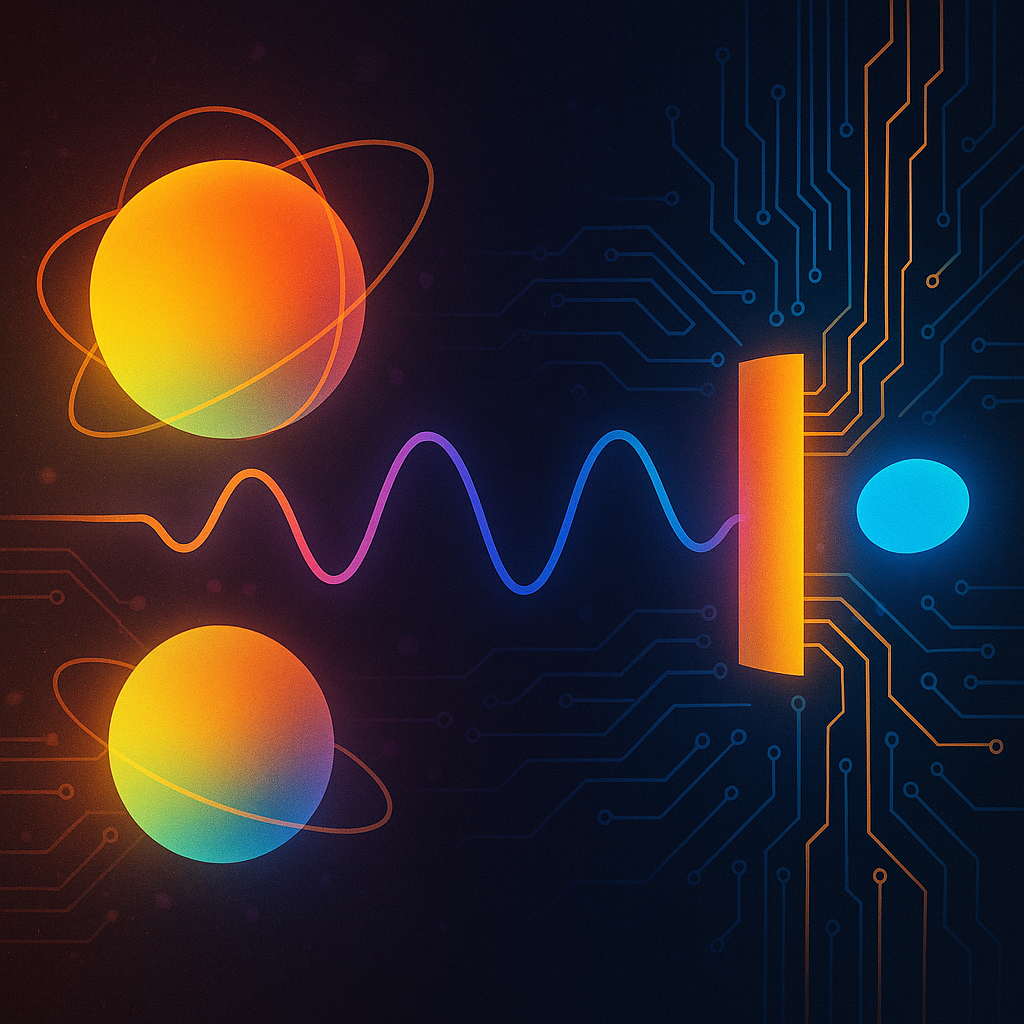
ChatGPT:
🏅 2025 Nobel Prize in Physics: Making the Quantum World Visible
🧠 The Award
• Winners: John Clarke, Michel H. Devoret, and John M. Martinis
• Reason: For creating systems that make quantum behaviors—usually seen only in subatomic particles—observable and controllable at larger, human-made scales.
• Importance: Their work links the mysterious microscopic world of quantum mechanics with practical technologies we can build and measure.
⸻
⚛️ What Quantum Mechanics Is
• Describes how the smallest particles (electrons, photons, atoms) behave.
• The rules are very different from everyday experience:
• A particle can act like a wave.
• It can be in two states at once (superposition).
• Two particles can become entangled—changing one instantly affects the other.
• Observation itself can alter what happens.
• Though strange, quantum mechanics underpins nearly all modern technology:
• Semiconductors in computer chips
• Lasers and LEDs
• Digital cameras and fiber-optic communication
• MRI scanners in medicine
• As the Nobel Committee put it:
“There is no advanced technology today that does not rely on quantum mechanics.”
⸻
🧩 Why the Laureates’ Work Matters
• Quantum effects normally occur only at the atomic scale and are fragile—easily destroyed by heat, vibration, or electromagnetic noise.
• Clarke, Devoret, and Martinis built superconducting circuits that:
• Behave like “artificial atoms,” large enough to handle and measure.
• Display quantum properties such as superposition and tunneling.
• Allow scientists to control and observe quantum behavior directly.
• These circuits are the foundation of superconducting quantum technology, used in research labs worldwide.
⸻
🔌 The Josephson Junction — A Key Building Block
• Two superconductors separated by a thin insulating layer.
• Even though current shouldn’t cross the barrier, electron pairs (Cooper pairs) can tunnel through by quantum effects.
• Applying microwaves lets scientists control how easily electrons tunnel—turning the quantum current up or down.
• The junction behaves like a quantum switch or bridge between the classical and quantum worlds.
• When several are combined in a loop, they form a SQUID (Superconducting Quantum Interference Device) used to detect extremely weak magnetic fields.
⸻
💡 From Quantum Circuits to Quantum Bits (Qubits)
• These engineered “artificial atoms” have two main energy levels—like a 0 and a 1.
• A quantum bit (qubit) can exist in both levels at once, not just one or the other.
• Qubits can be entangled, linking their states so that operations on one influence others.
• Using quantum effects, qubits can process many possibilities simultaneously, giving quantum computers their potential power.
• The laureates’ devices provided the first stable, measurable qubits built from superconducting materials.
⸻
🖥️ What Quantum Computing Means
• In a classical computer:
• Bits are either 0 or 1.
• Tasks are solved step by step.
• In a quantum computer:
• Qubits can be 0, 1, or both at once (superposition).
• Multiple qubits can work together through entanglement.
• The system explores many solutions at once, then interference reinforces the correct answers.
• This could make quantum computers vastly faster for specific problems, such as:
• Simulating molecules and materials at atomic accuracy
• Breaking encryption codes or creating new secure communication methods
• Optimizing large, complex systems (traffic, supply chains, finance)
⸻
🧊 Why It’s Still Experimental
• Quantum states are extremely delicate; tiny disturbances destroy them (decoherence).
• Current systems must:
• Operate at near-absolute-zero temperatures (≈ −273 °C).
• Be heavily shielded from noise and vibration.
• Researchers are working on:
• Error correction to detect and fix quantum errors.
• Scaling up to thousands of reliable qubits.
• We are in the early decades—similar to computing in the 1940s.
⸻
🚀 Recent Milestones
• In a 2024 benchmark test, Google’s quantum processor solved a complex problem in under five minutes, while a classical supercomputer would need 10 septillion years.
• Though such tests are symbolic, they show quantum advantage—proof that quantum devices can already outperform classical machines on some tasks.
• Tech giants (Google, Amazon, Microsoft) and startups (like Qolab) are all racing to turn these prototypes into useful tools.
⸻
🔭 The Bigger Picture
• The Nobel winners’ research proved that quantum mechanics can be engineered at human scales.
• Their work enables:
• Superconducting qubits for quantum processors
• Sensitive magnetometers and precision measurement tools
• A new generation of quantum sensors and communication systems
• The next challenges:
1. Make quantum circuits larger and more stable.
2. Develop practical algorithms for chemistry, medicine, and data science.
3. Create commercial quantum networks and secure encryption.
⸻
🌍 Why It Matters to Everyone
• Quantum technology could someday:
• Design new medicines by simulating molecules.
• Develop super-efficient batteries or materials.
• Improve weather and climate modeling.
• Strengthen cybersecurity through quantum encryption.
• Even today, everyday devices—phones, cameras, hospital scanners—already depend on quantum physics developed over the past century.
⸻
🧭 In Summary
• The 2025 Nobel Prize in Physics honors scientists who made quantum behavior observable and controllable, turning abstract theory into real tools.
• Their research:
• Bridges the gap between subatomic physics and practical engineering.
• Lays the foundation for quantum computing and quantum sensing.
• Quantum mechanics once explained only how atoms behave.
Now, thanks to Clarke, Devoret, and Martinis, it is also shaping how the next generation of computers and technologies will think, measure, and connect.
